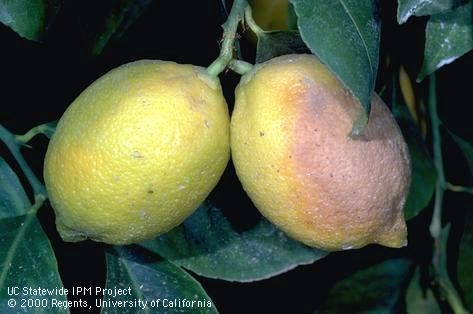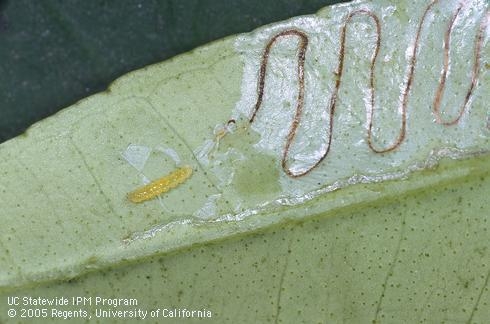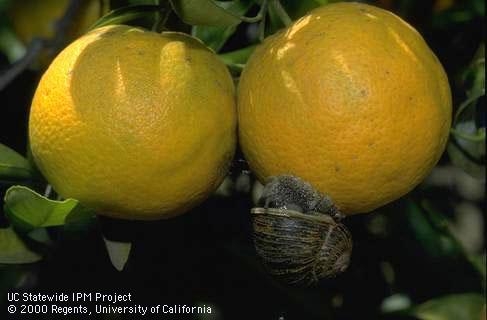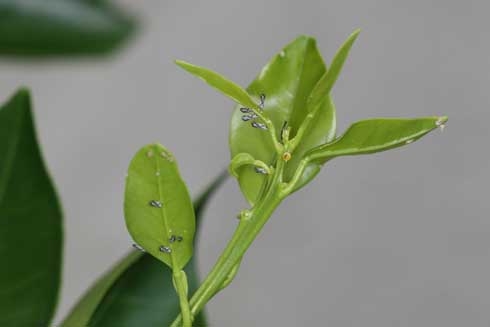Brown Rot
Monitor for this disease by checking for damaged fruit on your tree, as well as fruit in storage. Sometimes affected fruit develops a pungent odor and can ruin fruit held in storage. See the UC IPM web page on Brown Rot to learn more.
Citrus Leafminer
Winding citrus leafminer tunnel on upper surface of a leaf. (David R. Haviland)
Citrus leafminer rarely causes problems for mature trees, however, it can seriously damage very young trees. Read the UC IPM Pest Notes: Citrus Leafminer for recommendations for prevention or management.
Snails and Slugs
Brown garden snail on citrus. (Jack Kelly Clark)
Asian Citrus Psyllid and Huanglongbing
You may have heard of the Asian citrus psyllid and the deadly disease huanglongbing (also called citrus greening) that has been featured in the news. This disease doesn't pose a threat to humans or animals, but is deadly to citrus trees. Once a tree develops huanglongbing, there is no cure, so for this disease prevention is key.
Adults and nymphs of Asian citrus psyllid, attacking young growth on citrus. (Michael. E. Rogers)
UC IPM Web Site
For information on managing other citrus pests in the garden, see the UC IPM webpage on Pests in Gardens and Landscapes: Citrus.



